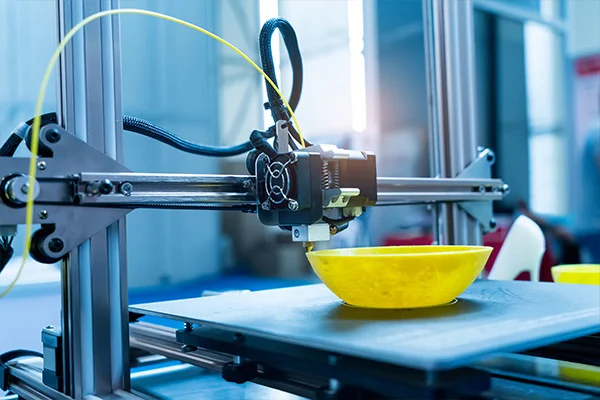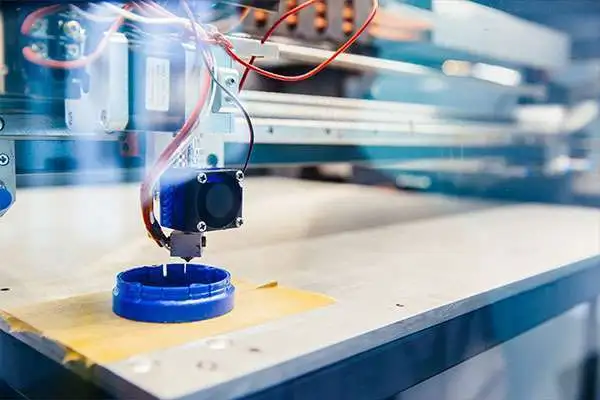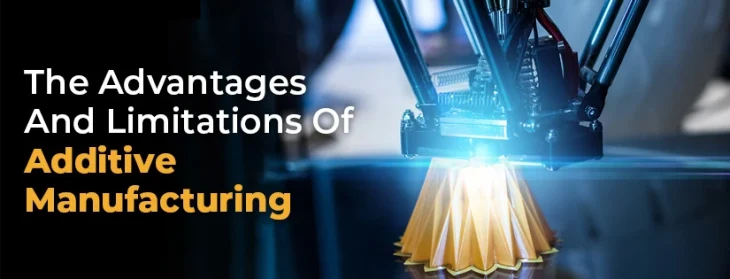How Inspection And Validation Can Improve The Reliability Of Additive Manufacturing Processes
Table of content What Is Meant by Inspection and Validation? 4 Steps to improve Inspection and Validation How Can You Implement Inspection and Validation in Your Additive Manufacturing Process? Conclusion Do you want to make the processes you use for additive manufacturing more reliable? If so, you’ve come to the right place. This article will talk about how you can make your 3D printing more reliable by using inspection and validation.The additive manufacturing method, which is sometimes called “3D printing,” is a business that is growing quickly and changing the way we make things. 3D printing is a popular way to make prototypes and custom parts because it can make complicated shapes and patterns. Still, as with any manufacturing process, it’s essential to make sure that the final product meets quality and reliability standards. At this point, there needs to be an inspection and validation. What Is Meant by Inspection and Validation? During the inspection, the printed item is looked at to make sure it meets certain standards, such as size, finish, and material quality. Validation, on the other hand, is the process of testing the part to make sure it works as expected under different conditions, like stress or heat.Additive manufacturing might be more reliable if there were better ways to inspect and test products. 4 Steps to improve Inspection and Validation 1. Catching Errors Early Inspection is a key part of the process of additive manufacturing because it lets you find mistakes early on. This is important because it could save you money and time in the long run. For instance, if a part is printed in the wrong size, it may be caught early and fixed so that the whole part doesn’t have to be made again or thrown away. If you catch problems early, you may save money and improve the overall quality of your printed parts. 2. Ensuring consistent quality Checking and validating processes make sure that the quality of your printed parts is always good. This is very important if you want to make consistent products that meet your customers’ needs. By regularly testing and certifying your parts, you can find any quality problems and fix them before they get worse. This could make your customers happy and improve the quality of your goods as a whole. 3. Identifying areas for improvement By looking at and testing your additive manufacturing process, you may find ways to make it better. For example, if parts keep failing a certain validation test, you can find out why and make any changes to the printing process that are needed. This could help you improve the performance and dependability of your printed parts, making your customers happier and making your goods work better overall. 4. Increasing Confidence in the Final Product If you use inspection and validation techniques, you might be able to trust the end results more. This is very crucial in fields like medicine and aviation, where dependability is significant. Testing and validation make sure that your products meet the right standards and specifications and work as expected in different situations. This could help you meet client needs, get industry certifications, and build a stronger reputation as a reliable provider. How Can You Implement Inspection and Validation in Your Additive Manufacturing Process? 1. Develop a Quality Control Plan For your additive manufacturing process to work, you need a quality control plan that includes inspection and validation steps. This plan should say what will be checked and how validation tests will be done. The strategy should also say how much error is okay for each of the specs that are being tested. A good plan for quality control can help make sure that everyone who works on the part knows what it is supposed to do. 2. Invest in the Right Equipment For inspection and validation procedures to work, you need to buy the right tools. Measurement tools, test equipment, and software are all examples of this type of equipment. You should choose the equipment based on how your production process works and how precise it needs to be. For example, you might need to buy a coordinate measurement machine (CMM) if you need to figure out the size of something. 3. Train Your Team It’s necessary to show your staff how to use the equipment and go through the same inspection and validation steps every time. During this training, the contents of the quality control plan, the tools and equipment that are used, and the right way to do inspections and validation tests should all be talked about. The training should also cover what to do if a part doesn’t meet the requirements, such as writing down the problem and fixing it. Conclusion Inspection and validation are two important steps that help make additive manufacturing more reliable. You can make 3D printing more reliable by catching mistakes early, making sure the quality is always the same, looking for ways to improve, and having more faith in the end result. Do you want to use additive manufacturing more effectively? Prescient Technologies can assist you! Our software development services could completely change how you use 3D printing and other methods of “additive manufacturing.”So, make a plan for quality control, get the right tools, and train your staff. Then, you’ll be on your way to better 3D-printed products. References: TUVSUD ESCIES Additive Manufacturing Internet of Business
Read MoreDesigning For Additive Manufacturing: Best Practices For Successful Product Development
Table of content Top 8 Best Practices For Successful Product Development Conclusion Top 8 Best Practices For Successful Product Development 1. Start with a thorough understanding of the technology Additive manufacturing has changed how complex parts are made, making it possible to make structures that were once impossible to make. But if you want to make good designs for 3D printing, you need to know how the technology works.For example, you need to know about the build volume, resolution and precision of each 3D printing technology and choose the right materials for your design. Also, you need to think about how the parts will be positioned and held up during the printing process. By thinking about these things, you can make designs that work well with the technology and use all of its features. 2. Optimise parts for the build process Putting together a 3D printer might come with its challenges, which you should think about. For example, you have to think about how the pieces are set up on the build plate to make sure they are supported well when printing. 3. Reduce material usage 3D printing is better than traditional ways of making things in a lot of ways, like being able to use less material. By designing parts to use less material, you can make products that are more environmentally friendly and make less waste. One way to do this is to build with lattices, which are strong but use less material. Putting these structures into designs can help make parts that are light but strong, useful, and long-lasting. 4. Consider post-processing requirements When a 3D print is finished, it may need to be cleaned or finished. It is called “post-processing”. Keep these needs in mind when you’re designing, since they could make the production process take longer and cost more. By making parts that are easy to clean and polish, you can save time and money during post-processing. Also, if components are designed with as few support structures as possible, they may need less post-processing. 5. Optimise for material properties When designing parts for 3D printing, you need to think about how the materials work. During the printing process, for example, some materials may be more likely to bend or change shape, while others may be more likely to break or crack. If the designs work well with the properties of the chosen material, the parts will be strong and useful. 6. Use design software that supports 3D printing A key part of the DFAM process is the use of design software. If you use software made just for 3D printing, you can make designs that work best with the technology. These software tools can help you find problems, like places that might need more support, and give you ideas on how to fix them. 7. Incorporate tolerances Tolerances are the allowed differences from a given dimension that designers must take into account when making things for additive manufacturing. Since the accuracy and precision of 3D printing processes vary, planning with tolerance in mind may help avoid problems like pieces that are too tight or too loose. Tolerances in the design can also help make sure that the pieces fit together right and work as planned. 8. Collaborate with experienced 3D printing partners Working with people who have already used 3D printing can help you make your designs better. These partners can tell you important things about what you can and can’t do with 3D printing technology. They can also show you ways to make your printing more effective and efficient. 9. Test and lterate Testing and iterating are important parts of making a good product, and they are even more important when designing for additive manufacturing. Because 3D printing technologies are always changing, it’s important to keep up with the latest changes and to keep testing and improving designs. With 3D printing, prototypes can be changed and tested quickly, so design flaws can be found and fixed quickly before the product goes into production. Conclusion To design for additive manufacturing, you have to change the way you think about things. When designing for efficient and effective production, 3D printing’s unique strengths and weaknesses must be taken into account. By following the best practices in this article, you can make sure that their parts are good for 3D printing. This will lead to faster production, less material waste and more environmentally friendly products.If you want to elevate your additive manufacturing processes and stay ahead in the competitive market, Prescient Technologies can be your go-to partner. With our state-of-the-art software development services, we can help you get revolutionary results and improve how you use 3D printing and other “additive manufacturing” techniques.Get in touch with us today and take your product development to the next level. References: Alpha Bigrep Radius
Read MoreThe Advantages And Limitations Of Additive Manufacturing: A Comprehensive Overview
Table of content Top 6 Advantages of Additive Manufacturing: Top 6 Limitations of Additive Manufacturing Conclusion In the last few years, 3D printing and additive manufacturing have enhanced the scope of production. 3D printing is the process of putting layers of material together to make things that are three-dimensional. This technology is better than the old ways of making things in a lot of ways, but it comes with its own set of limitations. Here, we’ll look more closely at the top six pros and cons of additive manufacturing. Top 6 Advantages of Additive Manufacturing: 1.Reduced Time and Cost One benefit of additive manufacturing is that it makes production faster and cheaper. Usually, when making a new product, you start by making a prototype, then the tools, and finally the finished product. This process could take a long time and cost a lot of money. But additive manufacturing makes the process go faster. 2.Complex Geometries With additive printing, you can make things that would be hard to make in any other way. Additive manufacturing can be used to make structures with hollow channels inside and curved surfaces.3 3.Customization and Personalization Additive manufacturing makes it possible to change and personalize products. In traditional manufacturing, the same product is made over and over again, and there is no way to change it. Customers can use additive manufacturing to make one-of-a-kind items with their own specs, sizes, and shapes. 4.Reduced Material Waste If additive manufacturing is used, there may be less need to throw away materials. With traditional ways of making things, like subtractive manufacturing, a lot of materials are wasted. In additive manufacturing, just the right amount of material is used. This cuts down on waste and saves money on materials. 5.Faster Prototyping One more benefit of additive manufacturing is that prototyping can be done more quickly. When standard production methods are used, prototyping can take a long time and cost a lot of money. Additive manufacturing can be used to make prototypes quickly and cheaply. You can easily change designs, try out new materials and shapes, and repeat the process. This makes it easier and cheaper to get products to market faster. 6.Simplified Supply Chains Since additive manufacturing makes it possible to make things only when they are needed, supply chains may be easier to run. Instead of making a lot of the same thing and storing it in warehouses, additive manufacturing lets people make things as they need them. This might make people need less storage space and be less likely to keep things they don’t need. Top 6 Limitations of Additive Manufacturing: 1.Limited Materials One problem with additive manufacturing is that it can only print with a certain number of materials at one time. Even though the number of materials is growing, it is still very small compared to conventional methods. This limitation could affect how well the final product works, how long it lasts, and how well it lasts. 2.Surface Quality A glaring limitation of additive manufacturing is that the surface quality of the parts is still not very good. Especially, when complex structures are made, a smooth surface finish is difficult to achieve. 3.Size Limitations With additive manufacturing, the size of objects may be limited. How big an item is depends on how big the printer is and how much room it has to work with. Larger things may need to be printed in parts before they can be put together. This will take time and make the process harder. 4.Complexity Limitations Using additive manufacturing, you can make buildings with complex shapes, but the shapes can only be complicated. Complex designs can be hard to make because they often need more support structures or post-processing steps, which take more time and money. 5.Limited Scale Another problem with additive manufacturing is that it can only make small quantities. Additive manufacturing is great for making small batches of goods, but it’s not ready yet to make a lot of things at once. This is because additive manufacturing is a slow method that might take a long time to make a lot of parts. 6.Environmental Impact When you use additive printing, it might be hard to get rid of things like support structures and failed prints. Also, if the materials used in additive manufacturing are not recycled or thrown away in the right way, they could hurt the environment. Conclusion In conclusion, additive manufacturing is faster, cheaper, more flexible, and wastes less material. It does, however, have a number of flaws, including a paucity of materials, poor surface quality, small size, and complexity issues. Despite these problems, additive manufacturing is an important part of the manufacturing industry and will continue to change and improve over time. Do you want to go to the next level with additive manufacturing? We can help you at Prescient Technologies. Our software development services could change the way you think about 3D printing and other methods of “additive manufacturing.” References:
Read More

